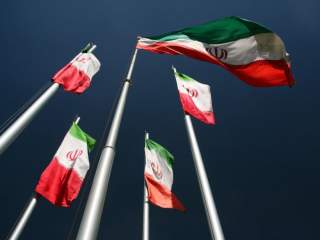Judging the Iran Nuclear Deal, Six Months In
Half a year after the JCPOA, the results are starting to come in.
With a major push from Secretary Kerry, the international community has launched a new and serious diplomatic effort on Syria, one in which all of the key parties, including Iran and Saudi Arabia, will participate. While an agreement to end the war in Syria is unlikely, creating a venue that keeps all the parties at the table is a prerequisite to any future deal. One need only look to the P5+1 process with Iran for an example. In 2009, negotiators finally brought all of the parties into the room. While it took another four years to get a ceasefire in the form of the interim Joint Plan of Action, and nearly two more years beyond that to a final agreement, the existence of the negotiating forum was a necessary step along the way.
But despite these positive steps, negative developments in the region over the past six months have outweighed the positive. Iranian-Saudi competition has escalated. The execution of Saudi Shia cleric Nimr al-Nimr, Iranian protests damaging Saudi diplomatic facilities and Saudi decision to cut diplomatic ties is only the latest and most extreme example of a growing conflict. Iran’s meddling in Syria, Iraq, Lebanon and Yemen through sectarian surrogates and proxies has not changed. This behavior has fueled an aggressive Saudi response driven primarily by its own insecurity and fear of Iran. This fear has been exacerbated by the nuclear deal, as Saudi Arabia fears it is the beginning of a broader American pivot to Iran.
The Russian intervention in Syria, though not a function of the nuclear agreement, has further complicated the regional situation. Tactically, the Russians have failed to achieve their military objectives of quickly helping the Assad regime take Aleppo. But strategically, the intervention has caused a recalculation across the Middle East. The Assad regime, which was on the verge of collapse, is feeling more confident—as is its patron in Tehran. Meanwhile, the Arab states are wondering whether it is time to hedge on their relations with the United States and move closer to Russia.
Besides convincing Iran to join the Syria negotiations, there has been little change in U.S.-Iran relations. This may change once the parties reach implementation day and sanctions start to come off. It may also be a function of wanting to not make any significant moves in advance of the Iranian parliamentary elections. But for the moment, there has been little progress in deepening communication channels or cooperating on issues where the U.S. and Iran share common interests, such as Afghanistan. Instead, both sides have taken tough public postures to protect their political flanks at home. And as discussed above, Iran’s continued imprisonment of American citizens without any justifiable cause has created a major stumbling block towards improved relations.
Some of the regional reaction was inevitable, and any president who cut a deal with Iran was bound to face some backlash from the Gulf states. But the United States can do more by getting more engaged in Syria and Iraq, as it has slowly started to do, instead of consistently remaining six to twelve months behind the curve. It can also deepen counterterrorism cooperation with the Gulf states and Israel, aimed not just at Sunni extremists but also Iran. And simultaneously, the United States should seek new areas of cooperation with Iran, such as in Afghanistan, where we share common interests in keeping Afghanistan stable, keeping the Taliban out of power and stopping the flow of heroin.
The JCPOA must first and foremost be judged on its ability to prevent Iran from obtaining nuclear weapons, which was of course the primary reason for the agreement. From this perspective, the first six months have been a major success for U.S. foreign policy. However, the agreement’s implications for internal Iranian politics and the stability of the Middle East remain to be seen. There is not much the United States can do to shape outcomes inside Iran, but a proactive policy in the Middle East could ensure that the United States takes full strategic advantage of the agreement.
Ilan Goldenberg is a Senior Fellow and Director of the Middle East Security Program at the Center for a New American Security.
Image: Flickr/@yeowatzup

